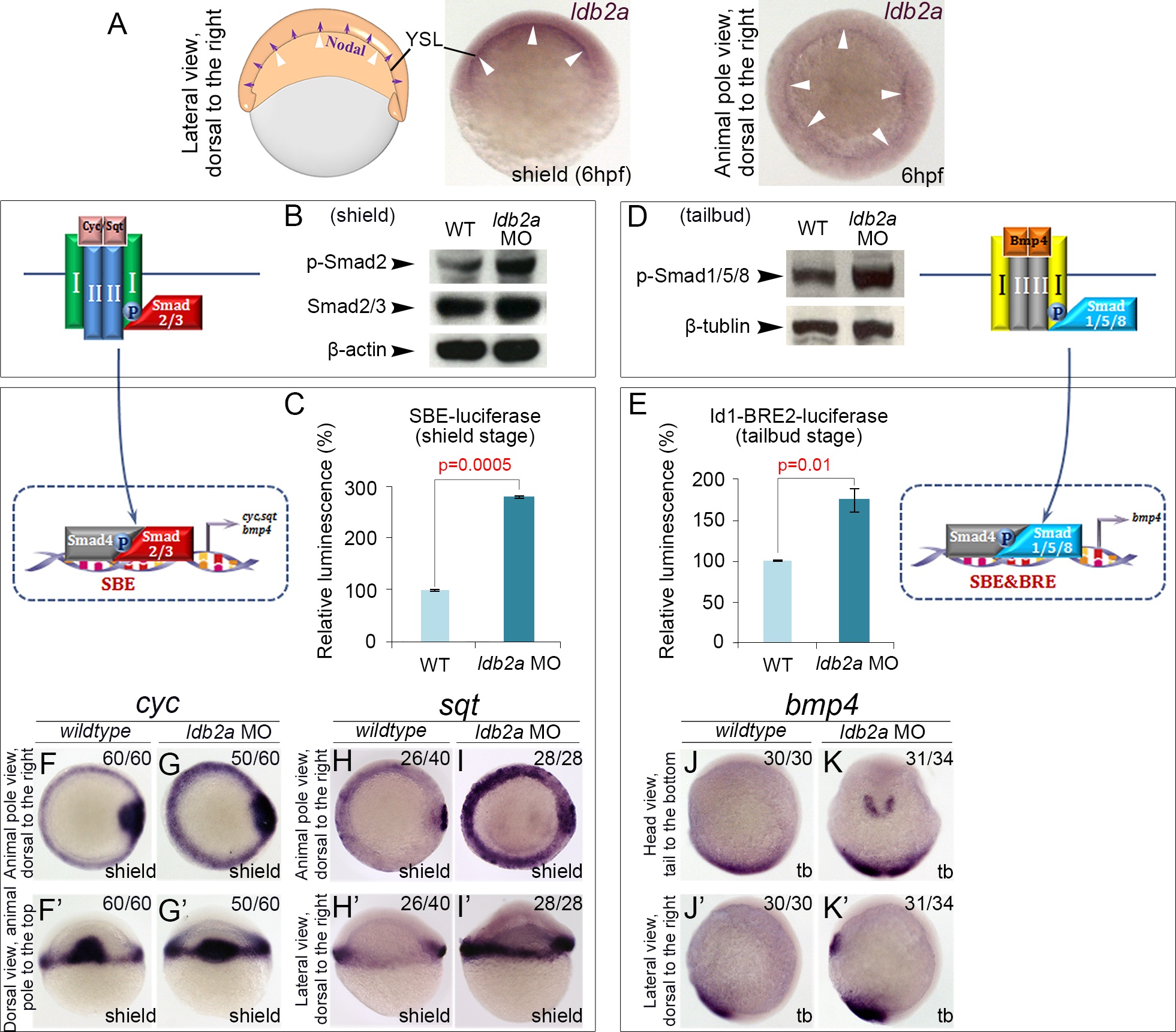Fig. 2
Knockdown of ldb2a enhances Nodal/BMP signal transduction in zebrafish embryos.
(A) At the onset of gastrulation, ldb2a expression is more noticeable in the yolk syncytial layer (YSL) (white arrowheads), which is an important source of Nodal signals (purple arrows). (B) At the shield stage, western blot showed increased phosphorylation of R-Smad2 in ldb2a morphants, while the level of overall Smad2/3 remained the same. β-actin was used as a loading control. (C) The activity of a TGFβ reporter SBE-luciferase was up-regulated in shield stage ldb2a morphants. (D) Phosphorylation of R-Smad1/5/8 was up-regulated in ldb2a morphants at the tailbud stage. β-tubulin was the loading control. (E) The activity of a BMP reporter Id1-BRE2-luciferase was increased in tailbud stage ldb2a morphants. (C and E) each displays a single representative experiment of three biological replicates, with the error bars corresponding to two technical replicates. For each biological replicate, 50 embryos were lysed and analysed. (F-I′) Expression of Nodal ligands, cyc and sqt, was increased in shield stage ldb2a morphants. (J-K′) Anterior and posterior expression of bmp4 was up-regulated at the tailbud stage. (F-G′): seven independent experiments, with the total number of analysed embryos shown on the top-right corner of each panel; (H-K′): two independent experiments. The wildtype control refers to uninjected embryos that are stage matched.

